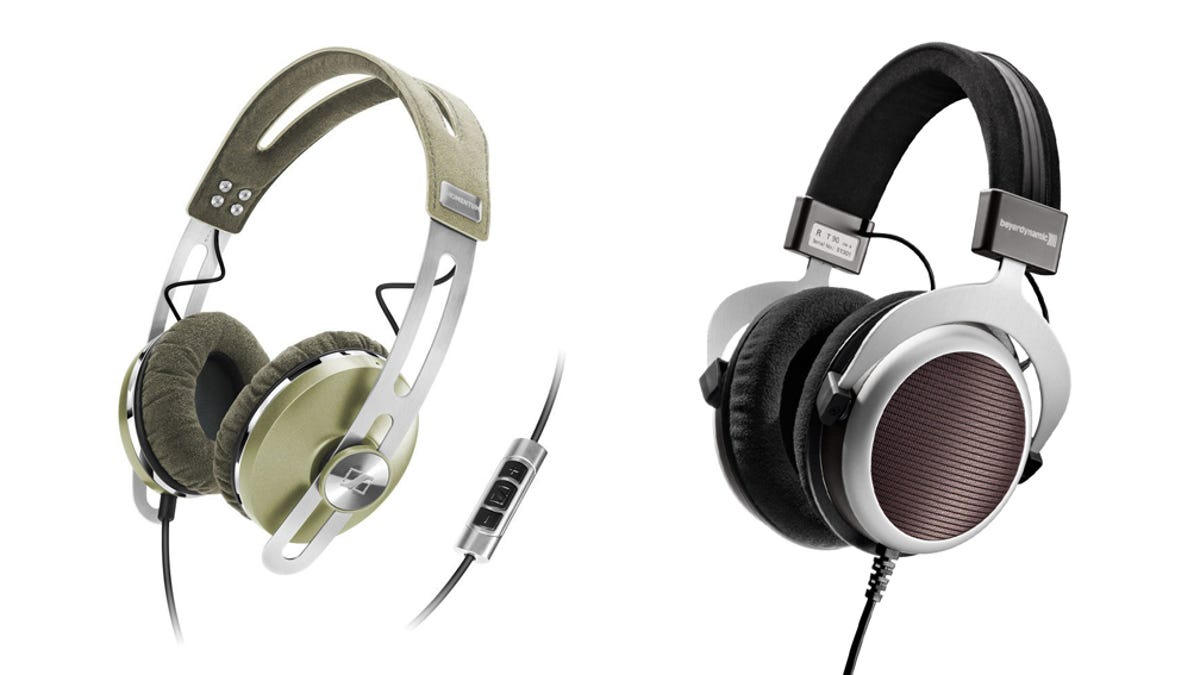What headphone buyers need to know, Part 1
On-ear vs. over-the-ear headphones, what's the difference?

I get a lot of reader emails seeking recommendations for headphones, and sometimes they'll ask about two very different types of designs. For example, "What should I buy, Sennheiser's on-ear Momentum or the AKG K 712 'phones?" In that case there's no obvious "better" headphone, because they are two radically different types of headphones. The Sennheiser is an on-ear, closed-back design, and the AKG K 712 is a much larger over-the-ear, open-back headphone. It's like asking "What's better, a Ford F-150 Raptor truck or a Porsche 911 Turbo sports car? They both go fast, but serve very different kinds of drivers. "Best," isn't the right question, it's more about what's the right one for you.
There are many types of headphones, and if you understand the pros and cons of each before you go shopping you'll make a more informed buying decision. Closed- vs. open-back headphones for example, serve different needs. To get a handle on how they differ I spoke with two engineers, Sennheiser's Axel Grell and AKG's Philipp Schuster, and they were a big help. Today I'll cover on- and over-the-ear headphones, tomorrow we'll look at open- and closed-back 'phones.
On-ear 'phones' ear pads rest on the outer ear; over-the-ear models' have larger ear pads that encircle the ears. Grell said that over-the-ear headphones produce more spacious and natural imaging than on-ear models. That's because over-the-ear headphones have larger ear cups which position the drivers further away from the ears, so more sound reflects off the folds of the outer ear. Which is closer to the way we hear sound from speakers. On-ears focus sound directly into the ear canal, so it's a less "natural" way to hear stereo sound. Over-the-ear headphones sound more spacious and expansive than on-ear headphones.
When it comes to bass power Grell and Schuster saw no clear cut advantage for either design type. Bass oomph depends on the specifics of each design, and how effectively the headphones' ear pads seal. If you wear glasses their side temples may adversely affect over-the-ear headphones' seal, and bass response will suffer. Glasses pose less of a problem for on-ear designs. Schuster reminded me that everyone's heads and ears are shaped differently, so the ability of a given headphone to achieve a tight seal varies from person to person.
Most on-ears are optimized for on-the-go users, so their designers focus on making smaller headphones, and that sometimes requires the use of smaller drivers. That approach will limit the amount of bass the headphone can produce. So with headphones size does matter, and a preference for smaller size trumps comfort and sound quality for most buyers.
Over-the-ear headphones are more comfortable to wear for extended periods of time, because instead of having ear pads pressing directly on the outer ears, over-the-ears' pads surround the outer ear. On-ears' "clamping" against the ears' pressure tends to be higher, and they will probably make your ears hotter and sweatier than over-the-ear models. Of course, the specifics of each headphone's design come into play, but I almost always find over-the-ear models more comfortable.
Over-the-ears' biggest drawback is size, they're larger than on-ear headphones. I like the larger soundstage over-the-ear headphones produce, but some listeners prefer the more immediate/present sound of on-ears. Schuster recommends over-the-ears for sound quality and comfort, but over-the-ears are less portable.
Most on-ear headphones are closed-back designs, but over-the-ear models can be either open- or closed-back. I'll cover their pros and cons on tomorrow's blog. I wrote about how ear buds and in-ear headphones differ on a previous blog.

